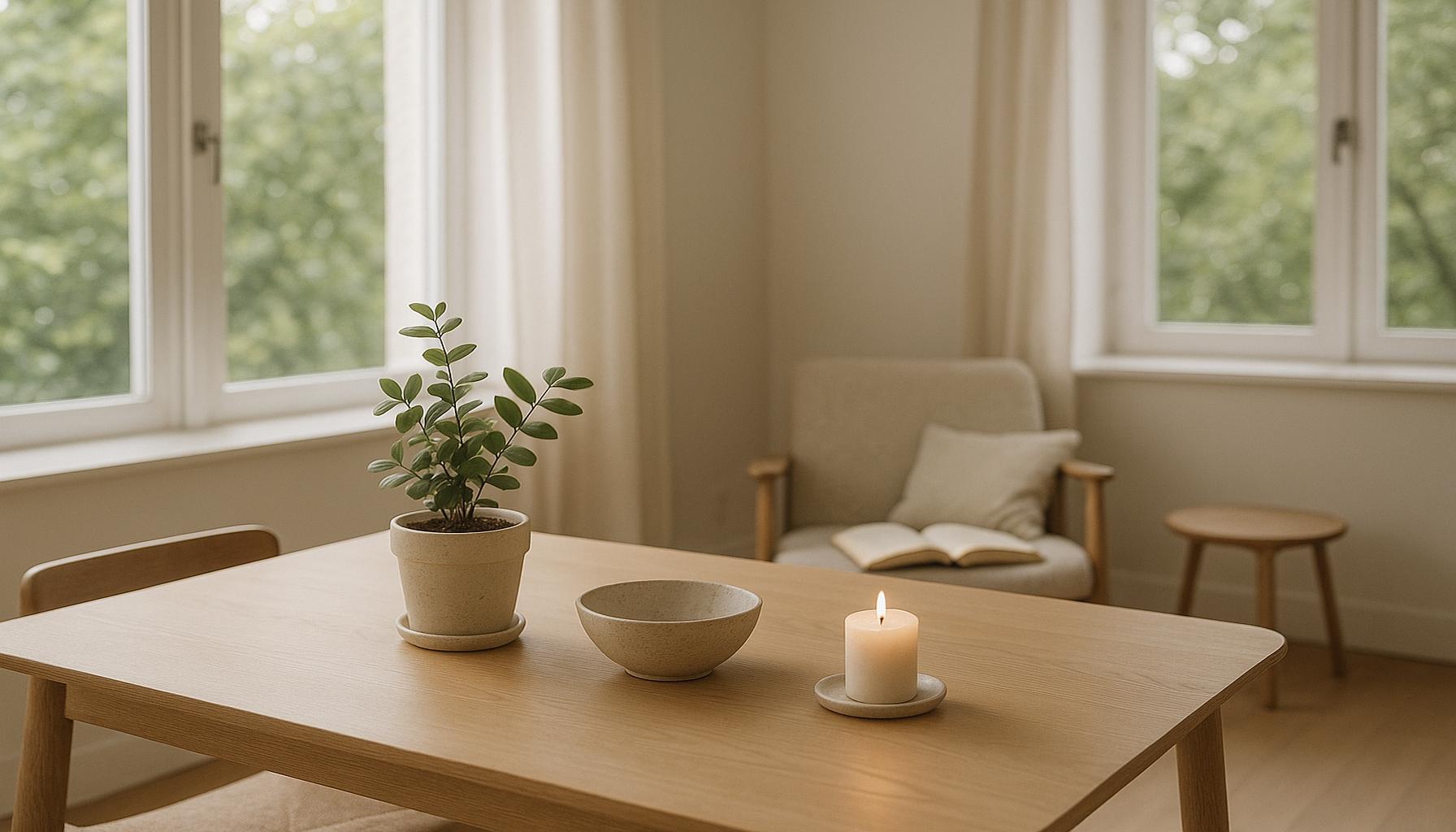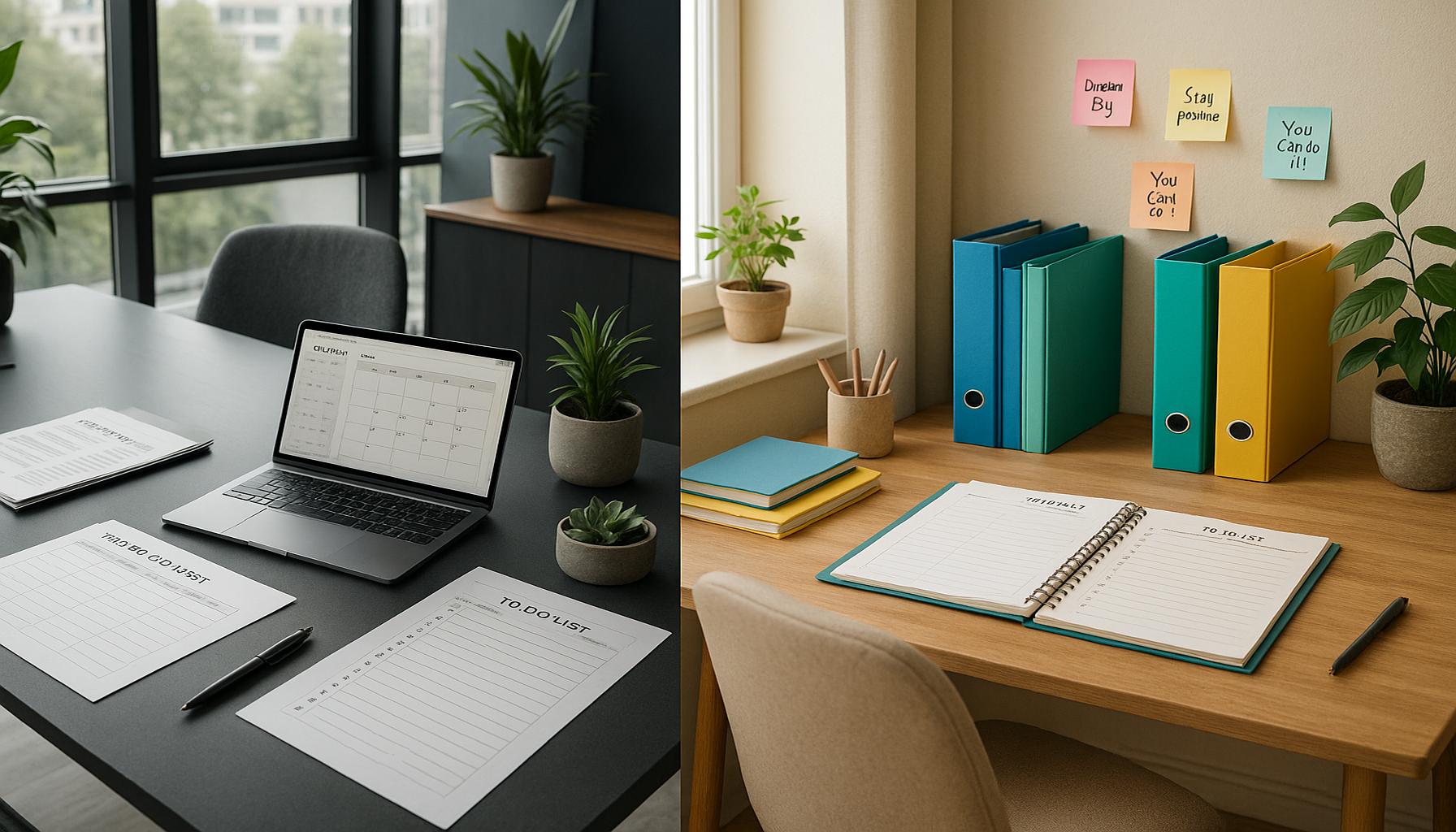Finding Freedom in Time: The Minimalist Approach to Time Management and Productivity

Embracing the Minimalist Philosophy for Effective Time Management
In a society that glorifies busyness, many find themselves trapped in a whirlwind of tasks and commitments, often wondering how to regain control over their time. The principles of minimalism can be the beacon of hope you might need. By adopting a minimalist approach to time management, you can experience the profound benefits of a more intentional lifestyle.
Clear Priorities are essential to minimalism. This concept urges individuals to identify what truly matters to them, refining their focus to only the most meaningful tasks. For instance, instead of juggling numerous obligations, consider distilling your to-do list to just three crucial items for the day. This not only allows you to pour your energy into what counts but also provides a satisfying sense of accomplishment when those key tasks are completed.
Next, let’s discuss how to Declutter Your Schedule. It’s easy to fall into the trap of overcommitment, believing that saying yes to every invitation or request is a way to demonstrate productivity. However, by setting firm boundaries around your time, you create openings for activities that genuinely resonate with you and enhance your productivity. For example, if you find yourself inundated with social obligations, consider prioritizing quality time with a select few friends rather than attending numerous gatherings where you may feel obligated.
Another important aspect of minimalism is making Mindful Decisions about how you allocate your time. Take a moment to evaluate activities that do not align with your goals or values. By consciously choosing where to invest your time, you pave the way for deeper focus and creativity. For example, assume you are an aspiring writer. Rather than getting bogged down by myriad distractions, you might designate specific blocks of time each day for writing, allowing your creativity to flourish without interruption.
The repercussions of integrating these minimalist principles into your time management practices can be profound. Not only can you expect Reduced stress and anxiety regarding deadlines and commitments, but you can also enhance your focus and creativity. Embracing a minimalist approach can lead to a greater satisfaction from personal achievements, as you prioritize accomplishments that reflect your true self.
By implementing minimalism in your daily routine, you can unlock newfound freedom and efficacy in managing your time. As you journey towards a more intentional lifestyle, you may discover a fulfilling approach to not only managing your schedule but also enriching your overall quality of life. Delve into these principles of minimalism and see how they can fundamentally shift your relationship with time for the better.
DISCOVER MORE: Click here to find your path to personal freedom</p
Streamlining Your Day: The Art of Intentional Planning
To fully embrace the minimalist approach to time management, the concept of intentional planning becomes paramount. Rather than automatic scheduling or mindless time allocation, taking a step back to assess how each hour of your day aligns with your core values is crucial. This proactive stance allows you to seize control of your life rather than letting the chaos of external demands dictate your time.
Start by adopting a Weekly Reflection ritual. Each week, set aside a dedicated time—perhaps on Sunday evening—to evaluate the past week’s activities. Ask yourself questions like:
- Which tasks truly advanced my personal or professional goals?
- What commitments drained my energy without offering fulfillment?
- How can I better align my schedule with my priorities moving forward?
These reflections will empower you to make more intentional choices regarding your time commitments. For example, if you realize that attending frequent networking events not only overwhelms your schedule but also yields minimal professional returns, it may be time to reconsider and perhaps attend only the ones that promise substantial value.
Next, integrate the practice of Time Blocking into your planning. This involves segmenting your day into defined blocks of time—each designated for specific tasks or activities. By doing so, you cultivate a sense of structure and predictability that enhances both focus and productivity. Here’s a possible breakdown:
- Morning Routine: 7:00 AM – 8:00 AM
- Deep Work Session: 9:00 AM – 11:00 AM
- Meetings/Collaboration: 11:30 AM – 1:00 PM
- Lunch Break: 1:00 PM – 2:00 PM
- Creative Tasks: 2:30 PM – 4:00 PM
This structure can help alleviate decision fatigue by eliminating the constant need to choose what to do next, allowing your mind to focus solely on execution instead. Time blocking also creates natural pockets of time for breaks, which are essential for maintaining energy and preventing burnout.
Another vital component in finding freedom within time is the practice of Digital Minimalism. This involves reassessing and often paring down your engagement with technology—social media platforms, emails, and notifications that compete for your attention. Studies have shown that the average American spends around 3 hours a day on their mobile devices, often engaging in activities that add little value to their lives. By critically evaluating and limiting screen time, you can free up significant mental space and create a calmer, more focused work environment.
Ultimately, the minimalist approach is about reducing the noise in your life, sharpening your focus, and enhancing productivity. Through intentional planning, time blocking, and a critical eye on your digital habits, you pave the way for a more liberated relationship with time and, in turn, a more fulfilling existence.
Finding Freedom in Time: The Minimalist Approach to Time Management and Productivity
The minimalist approach to time management and productivity pivots around the principle of eliminating the non-essential, which leads to a clearer focus on what truly matters. By adopting this mindset, individuals can escape the overwhelming clutter of daily responsibilities and streamline their activities to prioritize significant tasks. This not only enhances productivity but also fosters a sense of well-being and accomplishment.
One of the primary benefits of this approach is increased clarity. When distractions are minimized, it is easier to identify the tasks that align with personal and professional goals. This shift allows individuals to concentrate their efforts on high-impact activities, ultimately leading to better outcomes.
Another significant advantage comes in the form of reduced stress levels. Simplifying one’s schedule and responsibilities can alleviate feelings of being overwhelmed. The minimalist approach encourages individuals to say no to activities that do not serve their core objectives, freeing up valuable time and mental space.
Moreover, this method empowers individuals to cultivate a sense of balance in their lives. By intentionally crafting a manageable schedule, individuals can allocate time for self-care, relationships, and personal growth alongside their professional commitments. This holistic view of productivity introduces a more sustainable and fulfilling way to navigate daily life.
| Advantage | Description |
|---|---|
| Increased Efficiency | Focusing on essential tasks leads to better and quicker results. |
| Enhanced Well-Being | A simplified approach to time management reduces anxiety and fosters peace. |
Ultimately, the minimalist approach to time management and productivity encourages individuals to align their daily actions with their most important values, fostering a life of purpose and fulfillment. By understanding the significance of prioritizing essential tasks, readers can begin to unlock the freedom that comes with mastering their time effectively.
DISCOVER MORE: Click here to find peace through minimalism
Embracing Flexibility: The Power of Adaptable Routines
While intentional planning is key to a minimalist time management strategy, embracing flexibility within your routine is equally essential. Life is inherently unpredictable, and the ability to pivot in response to changing circumstances can significantly enhance your productivity and overall satisfaction. By cultivating a flexible mindset, you can better adapt your plans without succumbing to stress or frustration.
One approach to fostering flexibility while maintaining structure is to use a Prioritized Task List. Unlike a traditional to-do list, which may overwhelm you with a lengthy array of tasks, a prioritized task list involves selecting and ranking the most important tasks for the day. Here’s how to do it:
- Identify Your MITs (Most Important Tasks): Each morning, select 2-3 tasks that you must accomplish that day. They should directly contribute to your broader goals.
- Set Clear Boundaries: Designate specific time slots for these tasks but allow for buffer periods to accommodate unforeseen interruptions.
- Review and Adjust: At the end of the day, review what you’ve accomplished. If tasks remain unfinished, assess whether they are still priorities for the next day.
This system not only ensures that you stay focused on your highest priorities but also provides the freedom to adjust your plans as necessary. It fosters a sense of accomplishment without the rigidity that can lead to burnout.
The Importance of Scheduled Downtime
Another vital element in a minimalist approach to time management is the incorporation of scheduled downtime. In our hyper-connected world, we often glorify busyness, equating it with productivity. However, research indicates that consistent breaks and periods of relaxation are critical for maintaining peak performance.
Scheduling downtime can take various forms, including:
- Mindfulness Practices: Engaging in activities such as meditation or simply taking a moment to breathe can refresh your mental state.
- Social Connections: Making time for friends or family can offer emotional support, greatly enhancing your overall happiness and productivity.
- Physical Activity: Whether it’s a walk in the park or a quick workout session, incorporating movement into your day can significantly boost your energy levels and clear your mind.
Studies show that taking regular breaks can enhance creativity and cognitive function. By prioritizing downtime, you not only ensure your long-term productivity but also create a more balanced lifestyle.
The Role of Boundary Setting in Optimizing Time
Finally, no minimalist approach to time management would be complete without addressing the critical aspect of boundary setting. In an age where remote work and digital communication blur the lines between personal and professional time, setting clear boundaries is essential for protecting your time and energy. Consider implementing the following boundaries:
- Work Hours: Establish specific work hours and communicate them to your colleagues. This practice helps delineate when you are available and when you are not.
- Device Limits: Consider setting specific times during the day when you will check emails or respond to messages, minimizing distractions during focused work periods.
- Say No Strategically: It’s important to recognize that not every opportunity aligns with your goals. Practice saying no to commitments that do not serve your core values or priorities.
In conclusion, effective time management through a minimalist lens requires both structure and flexibility. By creating prioritized task lists, scheduling downtime, and setting clear boundaries, you can find the freedom to focus on what truly matters, ultimately leading to a more productive and fulfilling life.
DISCOVER MORE: Click here to enhance your focus
Conclusion: Cultivating Liberty Through Minimalism
In a world that often glorifies busyness and constant engagement, adopting a minimalist approach to time management and productivity offers a refreshing perspective. The key pillars of this strategy—planning with intention, embracing flexibility, scheduling downtime, and establishing boundaries—work in tandem to create an environment where you can thrive. By focusing on what truly matters, you liberate yourself from the shackles of overwhelm and open the door to a life rich with intention and fulfillment.
Implementing a prioritized task system ensures that you allocate time effectively, honing in on your Most Important Tasks (MITs). This not only increases productivity but also fosters a sense of achievement as you complete tasks that align with your broader goals. Meanwhile, embracing flexibility allows you to pivot when life throws unexpected challenges your way, relieving you of the stress that sometimes accompanies rigid schedules.
The incorporation of scheduled downtime and the practice of strategically saying no further enhance your ability to maintain balance. These practices ensure that you recharge physically and mentally, allowing creativity and focus to flourish. Ultimately, setting clear boundaries protects your sacred time, allowing for uninterrupted work hours and meaningful downtime with loved ones.
By redefining your relationship with time, you can cultivate a lifestyle that prioritizes clarity and peace amidst the chaos. In your quest for freedom, remember that simplicity is your greatest ally. Explore this minimalist approach to time management and unlock the path to a more productive and satisfying life.


